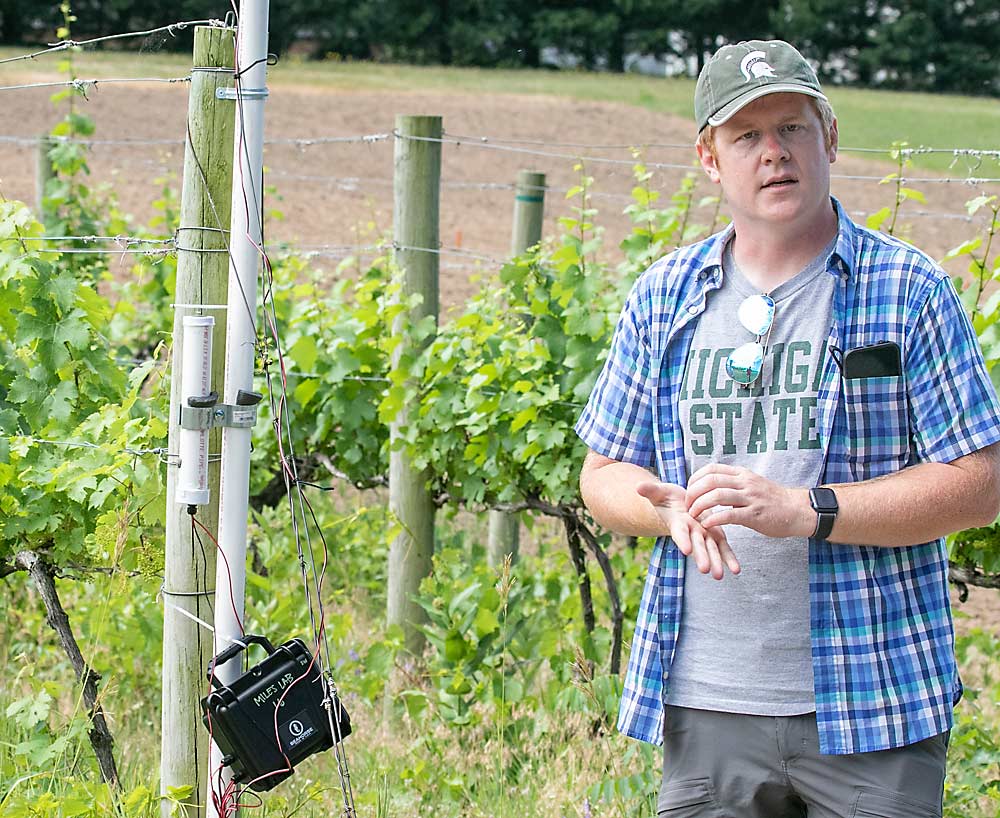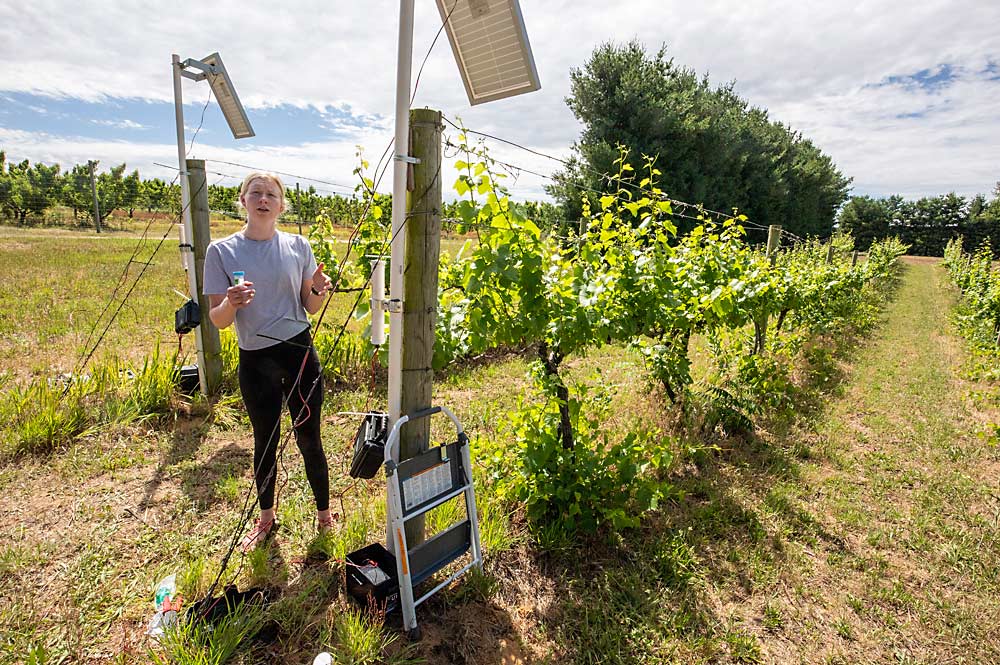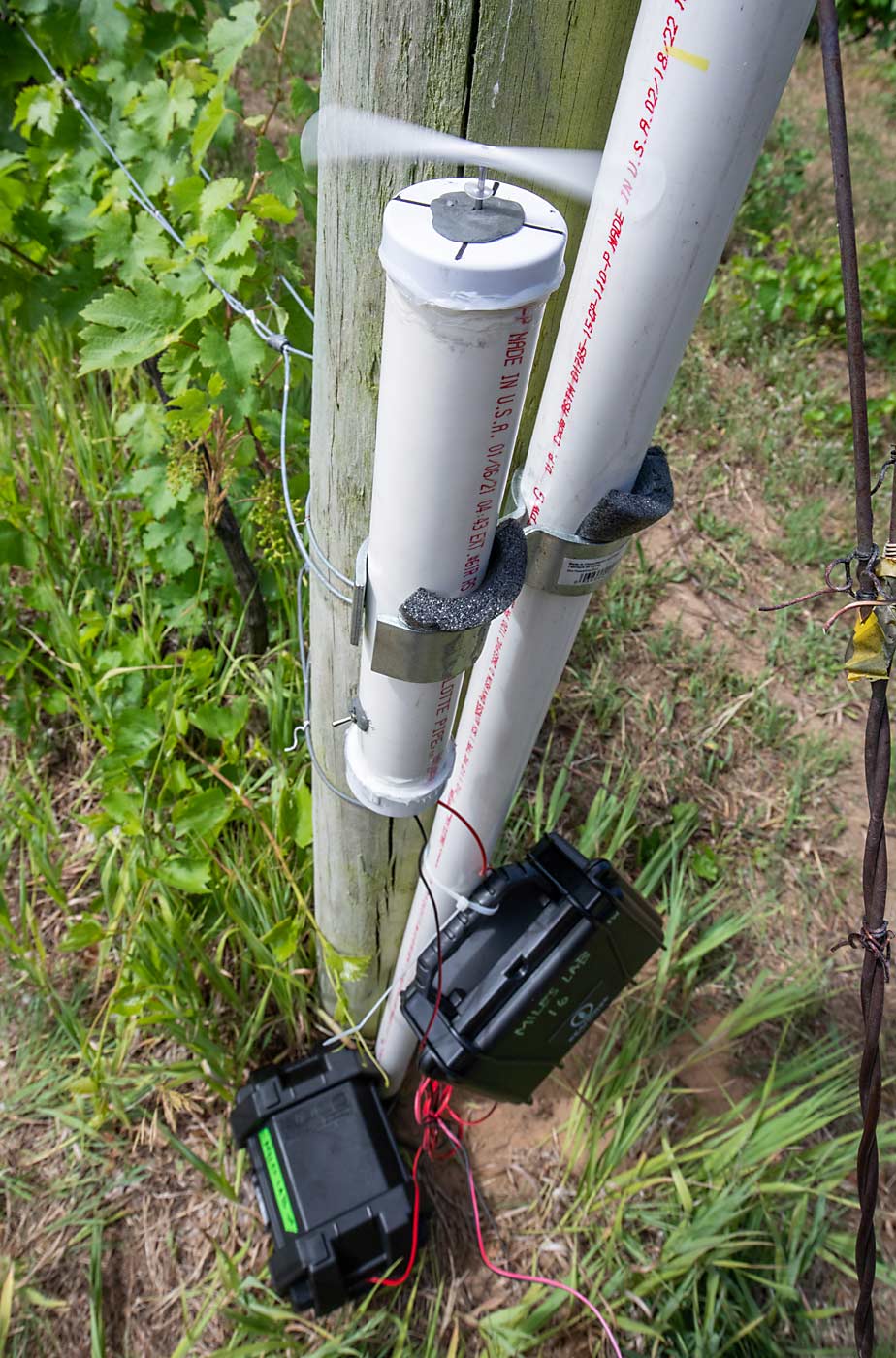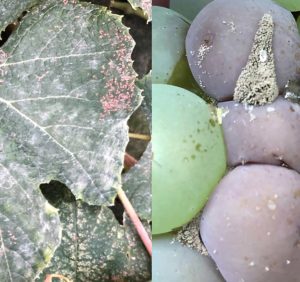
Western grape growers routinely place spore traps in their vineyards to detect powdery mildew. Pathologist Tim Miles thinks they might have even more uses in humid Michigan, where growers deal with many more grape diseases.
Miles, a small fruit and hop pathologist at Michigan State University, started studying the use of spore traps in Michigan in 2018 as part of his research into fungicides and fungicide resistance. Michigan grape growers do not have a history of using spore traps, but Miles worked with them in Oregon and California, before he moved to Michigan.
After joining MSU, Miles collaborated with colleagues around the country to secure a Specialty Crop Research Initiative grant from the U.S. Department of Agriculture to study fungicide resistance in powdery mildew, and spore traps are used in the study. He also secured grant funding from the Michigan State Horticultural Society and USDA’s Specialty Crop Block Grant Program to study downy mildew and botrytis. He eventually would like to study black rot, phomopsis and sour rot, too.
“In Michigan, there’s about six different pathogens we’re actively managing in vineyards,” he said. “If we’re going to do trapping, we need a system that’s going to work on all of them.”
Last June, Miles and graduate student Lexi Heger showed Good Fruit Grower a small vineyard plot of mixed Vitis vinifera cultivars at MSU’s Southwest Michigan Research and Extension Center. They placed three traps in the plot to collect downy mildew, powdery mildew and botrytis spores.

Miles and his research team built the spore traps — also called rotating arm impaction samplers, or air samplers — using open-source technology. The traps cost about $200 apiece to build. They’ve set up about 50 of them at three MSU research stations.
Heger described how the spore traps work: Each trap contains aluminum rods — coated with a thin layer of grease — that spin at about 2,400 rotations per minute, and spores dispersing in the air collide with and stick to the rods. After three or four days of spinning, the rods are likely saturated with spores and cannot effectively collect any more. When the rods are fully saturated, researchers from Miles’ team take them back to the lab to determine spore count and type of pathogen. They also monitor the spores for fungicide resistance.
The pathogens causing botrytis bunch rot, downy and powdery mildew all have different-sized spores. The air sampler’s motor can spin at different speeds (calculated using a formula) to more efficiently collect different spore sizes. Heger is trying to figure out if a single speed can capture the three varying spore sizes, she said.
A buck converter regulates and maintains the speed of the rods’ rotation. A 20-watt solar panel recharges the trap’s battery, allowing it to last all season.

Prediction and monitoring
Miles said vineyard disease prediction in Michigan is generally based on weather modeling and plant growth stage, and neither method is very precise. Spore traps are another way of studying disease patterns.
“Our main focus has been to try to figure out how the pathogens ebb and flow throughout the season,” he said.
The researchers also aim to monitor seasonal shifts in fungicide resistance. Downy mildew, probably the biggest disease problem in Michigan vineyards, has shown signs of building resistance over the course of the season. Powdery mildew seems to increase resistance over time, too — meaning fungicides that are effective early on can lose effectiveness as the season progresses, Miles said.
Spore traps can help pinpoint the presence of resistance, which can help guide spray programs. Miles recommends growers use resistance-prone fungicides earlier in the season and switch to products less prone to resistance later in the season.
Heger is narrowing down the best locations to place the traps within a vineyard. Preliminary results have shown that spore traps placed at the end of a row are just as effective as traps placed in the middle. And traps at the row end are easier to access. She’s placing the traps at different heights — 2 feet, 4.5 feet and 6 feet — to find the most efficient and accessible height.
Spore traps are used commercially in California, but they still have limitations. Growers must send the spore samples to the trap manufacturers for testing, and it can take weeks to receive the results, said Michelle Moyer, a Washington State University viticulture extension specialist.
—by Matt Milkovich







Leave A Comment